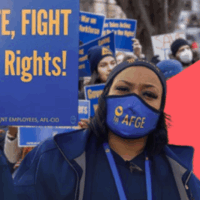The latest jobs report from the federal government, covering September employment, had some bad news and, so to speak, some better news.
The report, issued Oct. 8 by the Bureau of Labor Statistics, was a big miss compared with expectations — nonfarm employment rose by only 194,000, the bureau said, while economists were projecting 500,000 — and the weakest so far this year.
What was more encouraging about the generally dismal picture was that it ruled out a theme favored by conservative politicians and pundits. They had asserted that the federal boost to state unemployment benefits — which came to $300 a week this year, down from last year’s $600 a week — had kept workers glued to their living room couches instead of going out and getting a job.
Convinced of their wisdom, 26 states, mostly red states, ended the federal program before it was scheduled to expire Sept. 6. Some cut off benefits as early as June 12.
The cutoff was accompanied by some intemperate commentary from the business community. John Kabateck, a spokesman for the National Federation of Independent Business, a small-business lobbying group, depicted recalcitrant workers as “remaining on the couch watching reruns of ‘Gilligan’s Island.'”
But the latest job figures point to different forces keeping workers at home. One explanation is surely the rise of the Delta variant of the coronavirus, which led to a resumption of business closures and renewed safety fears among workers in jobs requiring close contact with the public, such as retail and restaurant employees.
Delta-related school closings may also have placed a particular burden on working women. About 309,000 women ages 20 and older dropped out of the workforce in September. With a loss of about 40,000 women in August, the female civilian workforce declined by about 350,000, or 0.5%, in those two months, the first such declines in a year.
There are also signs that workers are showing new reluctance to return to lousy jobs, whether defined by low pay, abusive or hazardous workplaces, or limited opportunities for advancement.
Some economists conjecture that savings from the higher unemployment benefits are giving these workers some breathing room to look for better work. That might be interpreted as justifying the impression that unemployment payments kept workers off the job, but in those cases the main result is still a job search, merely a more discerning one.
The government’s latest monthly Job Openings and Labor Turnover Summary, the so-called JOLTS report, underscores that the slow job recovery has much to do with workers looking for better work. According to the report, 4.3 million workers, or 2.9% of the labor force, quit their jobs in August. That’s the highest rate since the BLS began tracking the data in December 2000.
Voluntary quits by workers reached 2.9% in August, the highest rate since the government started tracking the statistic in December 2020. (Federal Reserve Bank of St. Louis)
The statistics point to what may be a dramatic restructuring of the relationship between employers and labor: Workers are voting with their feet on pay and conditions in the American workplace. That signals the imperative for employers to treat employees less as disposable automatons than as human beings.
Recognition of the flaws in American employment trends has been emerging for years, signified by increasing doubts about the warehouse jobs offered by big retail operations such as Amazon’s. In 2020, the National Employment Law Project documented that turnover in California counties hosting Amazon fulfillment centers, where laborers are pushed to the physical limit to prepare orders for shipping, exceeded 100%.
“Instead of cultivating workers to stay with the company for the long term, Amazon relies on a high-churn model that uses and discards workers without regard for the cost to their health or potential disruptions to their lives, their families, and their communities,” NELP asserted.



